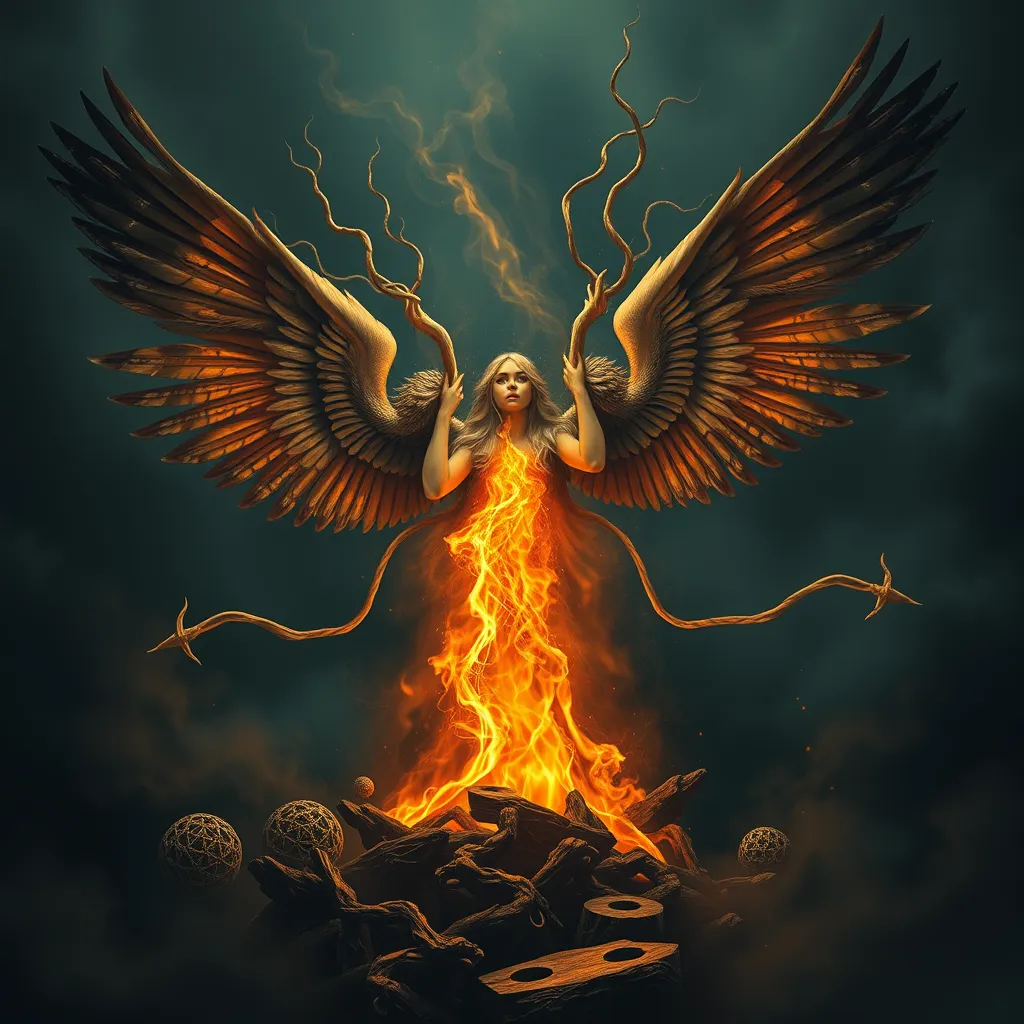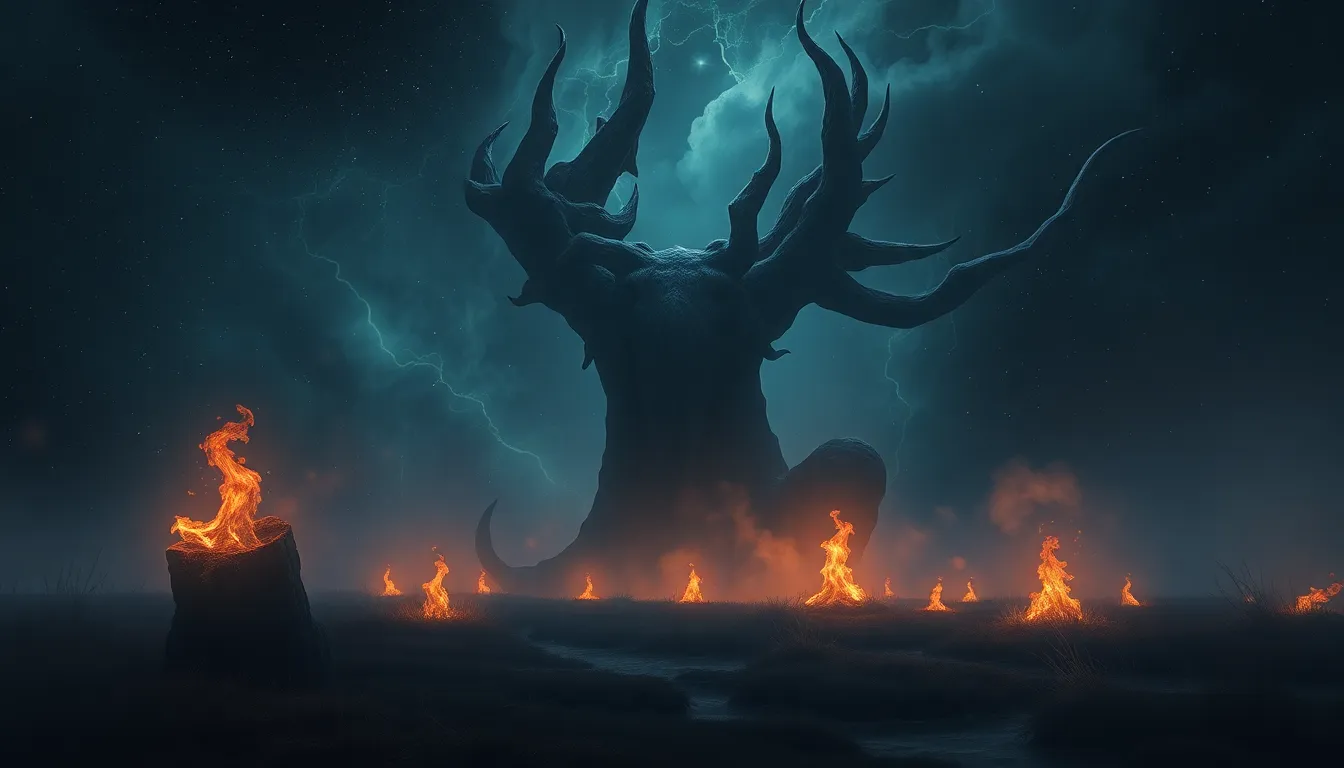The Harpies as a Warning about the Dangers of Feminine Power
I. Introduction
The Harpies, mythical creatures that originate from Greek mythology, have long captivated and terrified audiences with their portrayal as winged spirits. Often depicted as women with the bodies of birds, they embody a complex interplay of feminine power and chaos. These figures serve as a lens through which we can explore the theme of feminine power, particularly in a patriarchal society that often views such power with suspicion and fear.
This article posits that the Harpies serve as a cautionary tale about the potential perils of feminine power when it is perceived as a threat to the established social order. Through examining their historical context, symbolism, and modern interpretations, we can gain insights into the societal fears surrounding feminine autonomy and power.
II. Historical Context of the Harpies
The origins of the Harpies can be traced back to ancient Greek mythology, where they were often depicted as agents of punishment. Initially, they were seen as benevolent spirits, but over time their image morphed into that of malevolent beings who snatched away individuals and tormented the guilty.
As the mythos of the Harpies evolved, they became emblematic of the chaotic nature of feminine power. Their cultural significance is underscored by the prevalence of female figures in ancient narratives, often representing various facets of women’s roles in society—from nurturers to avengers.
III. The Symbolism of the Harpies
The Harpies symbolize chaotic feminine energy, embodying both beauty and terror. They are often associated with uncontrollable natural forces, representing the wildness of nature that can be both nurturing and destructive. This duality is key to understanding their role in mythology.
- Representation of chaos: The Harpies reflect the chaotic aspects of femininity that challenge societal norms.
- Connection to nature: They are intrinsically linked to storms and winds, further emphasizing their untamed nature.
- Avengers and tormentors: The Harpies serve as both punishing figures and agents of justice, blurring the lines between victim and villain.
IV. Feminine Power in Literature and Mythology
The Harpies can be compared to other formidable female figures in mythology, such as Medusa and the Sirens. Each of these figures embodies the archetype of the dangerous woman—women whose power provokes fear and fascination.
This archetype often reflects societal perceptions of women who wield power, suggesting that such power is inherently threatening. By examining these figures, we can better understand the cultural narratives that shape our views of femininity and strength.
V. The Harpies as a Reflection of Societal Fears
The fear surrounding the Harpies can be traced back to broader fears of female autonomy and independence. In a patriarchal society, women who assert their power are often seen as threats to the social order, leading to their portrayal as chaotic and destructive forces.
The consequences of rejecting traditional gender roles are significant, as evidenced by the Harpies’ transformation from symbols of benevolence to embodiments of revenge and chaos. This reflects a societal discomfort with women who defy expectations and assert their rights.
VI. Modern Interpretations of the Harpies
In contemporary literature and media, the Harpies have been reimagined in various ways, often through a feminist lens. Modern adaptations reclaim the Harpy narrative, focusing on themes of empowerment rather than vilification.
These reinterpretations highlight the relevance of the Harpies in today’s discussions of gender and power, showcasing how society can benefit from embracing the complexities of feminine strength.
VII. Lessons from the Harpy Mythos
Understanding the Harpy mythos provides valuable lessons about power dynamics. It highlights the importance of empowering women without demonizing their strength. By reframing the narrative, we can foster healthy expressions of feminine power that do not conform to traditional stereotypes.
- Balancing power dynamics: Recognizing that power can exist in many forms and should be shared rather than feared.
- Empowerment without demonization: Supporting women in positions of authority while acknowledging their rights to assert themselves.
- Reframing narratives: Encouraging stories that celebrate feminine strength without resorting to stereotypes of chaos and destruction.
VIII. Conclusion
In conclusion, the Harpies serve as a significant figure in understanding the complexities of feminine power. Their mythos reflects deep-seated societal fears regarding women’s autonomy and the potential chaos that can arise when traditional gender roles are challenged.
As we navigate modern society, it is crucial to recognize the implications of these narratives and embrace feminine strength. By acknowledging the historical warnings embodied by the Harpies, we can work towards a future where women are empowered to express their power without the burden of societal stigma.
Ultimately, the Harpies remind us that feminine power is not inherently dangerous but rather a vital force that can contribute positively to society when embraced and celebrated.



